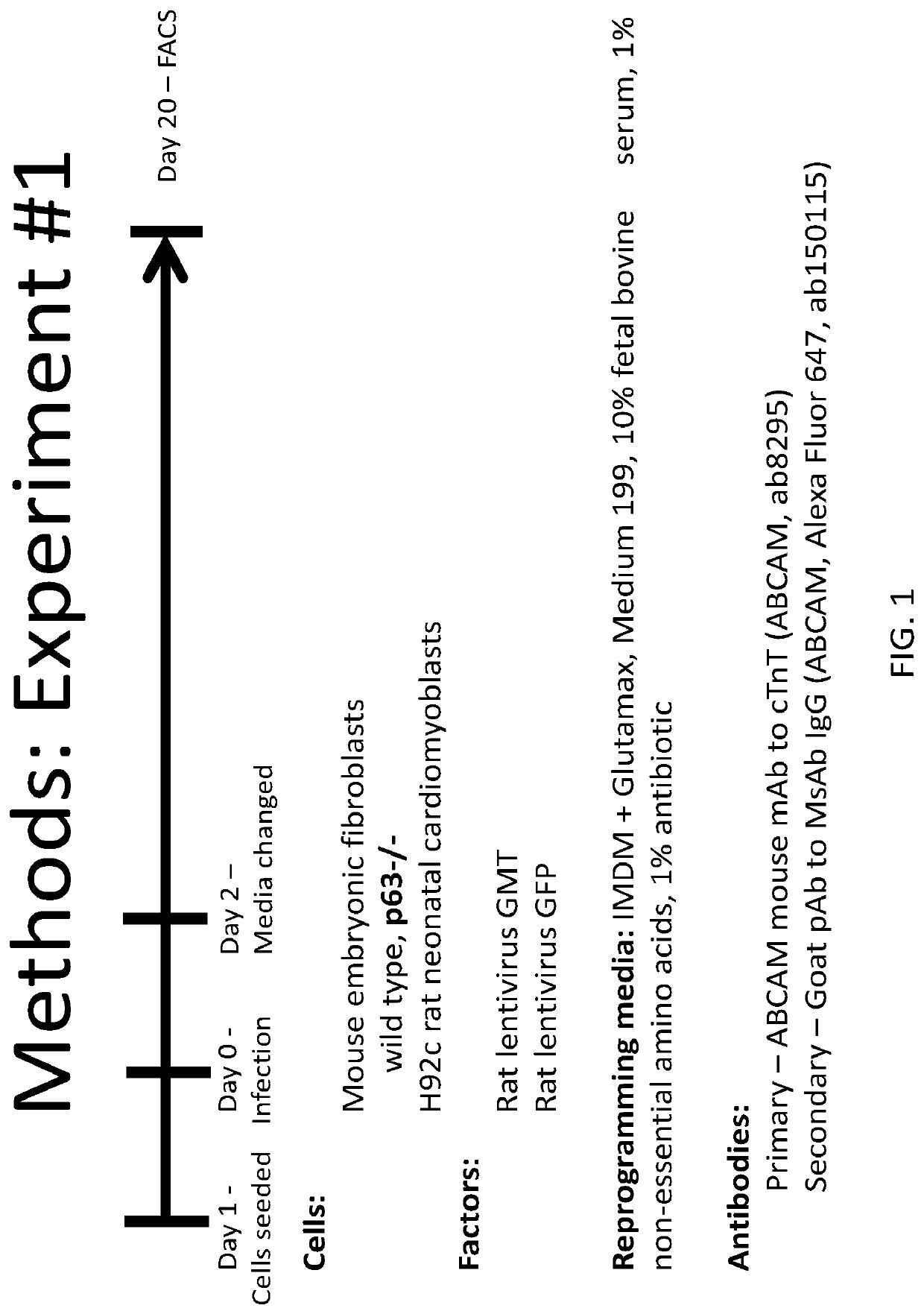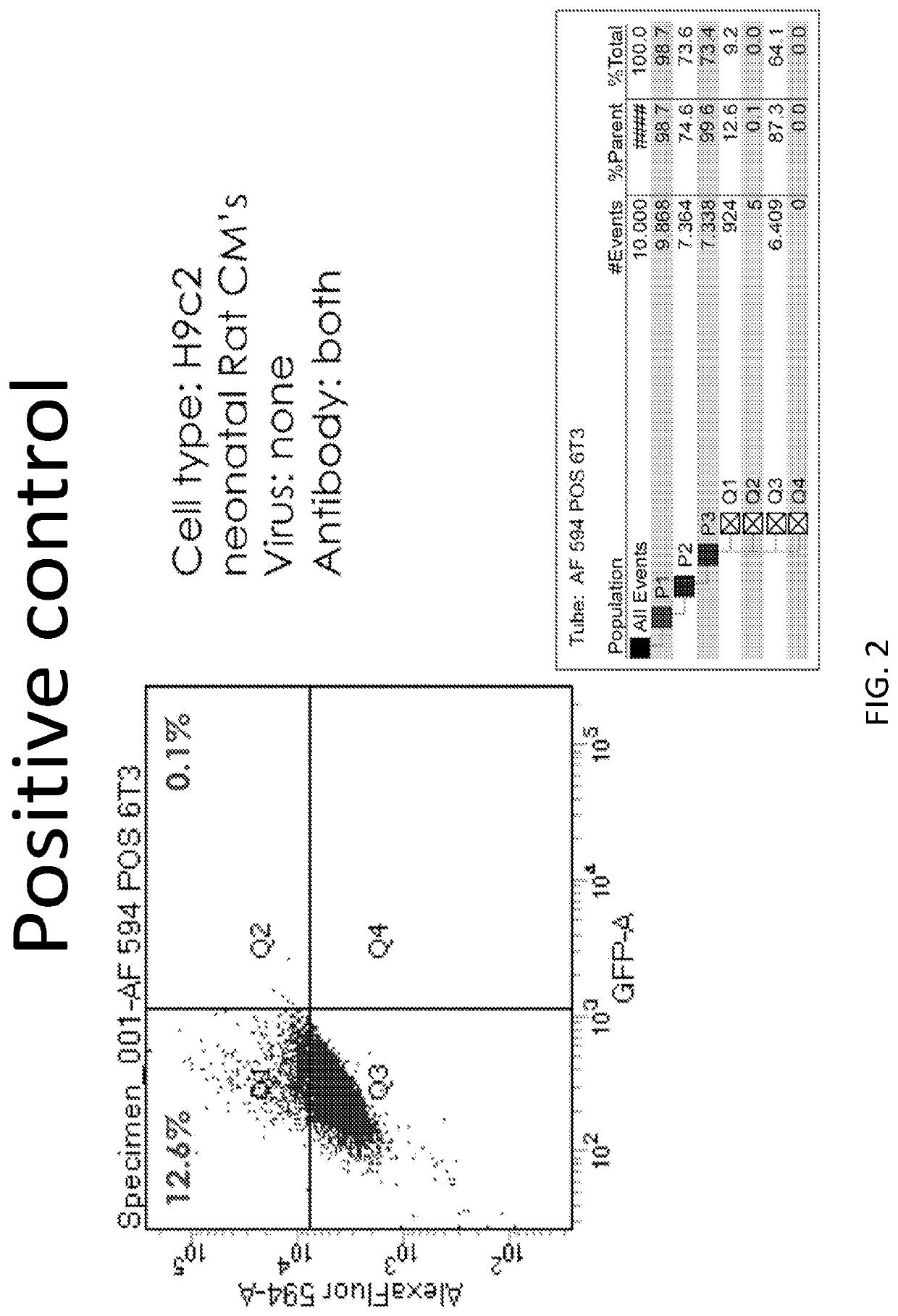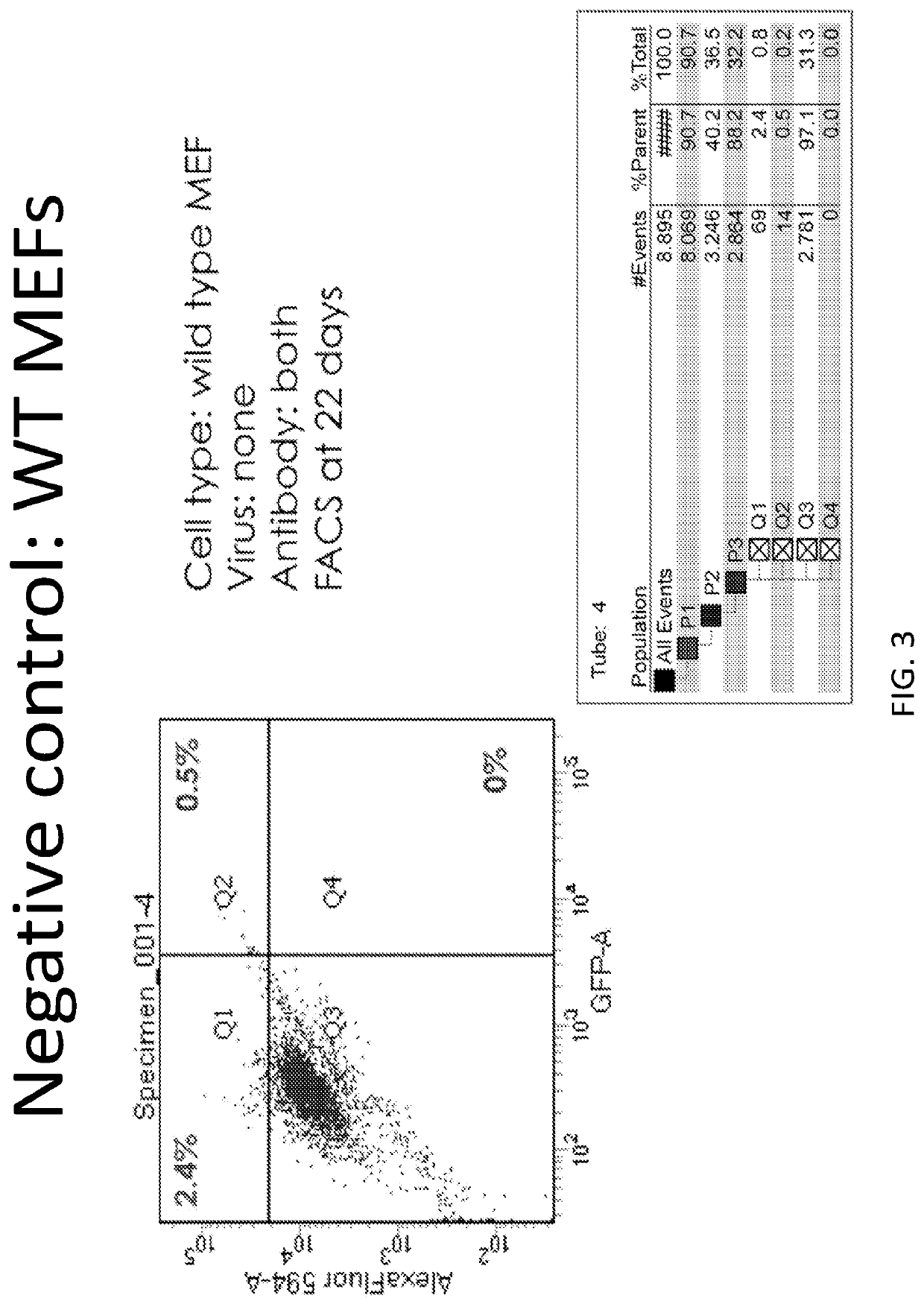P63 inactivation for the treatment of heart failure
a heart failure and inactivation technology, applied in the field of molecular biology, cell biology, cell therapy, medicine, can solve the problem of low reprogramming efficiency
- Summary
- Abstract
- Description
- Claims
- Application Information
AI Technical Summary
Benefits of technology
Problems solved by technology
Method used
Image
Examples
example 1
P63 Inactivation Increases the Transdifferentiation Efficiency of Fibroblasts into Cardiomyocytes
[0294]Cellular regenerative therapy has emerged as a treatment for a number of degenerative diseases, most notably ischemic heart disease, which is the number one cause of death in the world. Several strategies have been proposed, including transdifferentiation and the formation of induced pluripotent stem cells. Transdifferentiation has been attempted with transcription factors such as Gata4, Mef2c and Tbx5 (GMT), while iPS cells may be formed using the Yamanaka factors (Oct4, Sox2, Klf4, c-myc) or knocking down genes involved in regulating the cell cycle, such as p53.
[0295]While it has been reported that murine cells that are p63 deficient display a high degree of plasticity, no distinct strategy has been developed for their application in ischemic heart disease. Specifically, it has not been described how the p63 deficient cells may be “driven” down the cardiomyocyte lineage. The atta...
example 2
[0299]P63 Inactivation and Addition of Hand2, Myocardin Increases Formation of CTNT+ Cells from Murine Embryonic Fibroblasts
[0300]FIG. 12 illustrates an experimental design for analyzing transdifferentiation of fibroblasts into cardiomyocytes in vitro. FIG. 13 shows FACS data for unstained and stained wild-type MEFs (negative controls). FIG. 14 shows wild type MEFs treated with lentiviral GFP and lentiviral GMT. In FIG. 15, wild-type MEFs were given the noted factors (lentiviral Hand2 & Myocardin) and exposed to both antibodies. In FIG. 16, shows a positive control, h9c2 neonatal rat cardiomyoblasts. FIG. 17 shows the p63 − / − (which concerns the inactivation of both the TA and Delta isoforms of the p63 gene) MEFs where no factors were provided. The left side shows the control stained with only the secondary antibody while the right shows cells stained with both antibodies. FIG. 18 demonstrates the double KO p63− / − MEFs where GFP (left side shows staining only with secondary as a con...
example 3
P63 Inactivation and the Addition of Several Other Factors May Further Enhance the Transdifferentiation of Fibroblasts into Cardiomyocytes
[0303]Examples 1 and 2 illustrated two embodiments of applications of this disclosure. However, there are several other transcription factors that may be used to further enhance the efficiency: Gata4, Mef2c, Tbx5, miR-133, miR-1, Oct4, Klf4, c-myc, Sox2, Mesp1, Brachyury, Nkx2.5, ETS2, ESRRG, Mrtf-A, MyoD, ZFPM2 (in nucleic acid or polypeptide or peptide form, in specific embodiments). Adjunctive therapy could comprise ITD-1 (TGF beta inhibitor), VEGF, surgery (coronary artery bypass), PCI, or medial therapy, for example.
PUM
| Property | Measurement | Unit |
|---|---|---|
| temperature | aaaaa | aaaaa |
| ionic strength | aaaaa | aaaaa |
| temperature | aaaaa | aaaaa |
Abstract
Description
Claims
Application Information
 Login to View More
Login to View More - R&D
- Intellectual Property
- Life Sciences
- Materials
- Tech Scout
- Unparalleled Data Quality
- Higher Quality Content
- 60% Fewer Hallucinations
Browse by: Latest US Patents, China's latest patents, Technical Efficacy Thesaurus, Application Domain, Technology Topic, Popular Technical Reports.
© 2025 PatSnap. All rights reserved.Legal|Privacy policy|Modern Slavery Act Transparency Statement|Sitemap|About US| Contact US: help@patsnap.com



